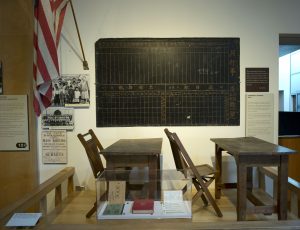
Los Angeles, Jun 24 (EFE).- The Japanese American National Museum, in this city’s Little Tokyo Historic District, is home to a permanent exhibit that looks back at the forced internment of people of Japanese ancestry during the 1940s, serving as a reminder of one of the darkest chapters in United States history.
Rick Noguchi, the museum’s chief operating officer, told EFE that it all started following Japan’s attack on Pearl Harbor in December 1941, an event that brought the US into World War II.
“Executive order 9066 was signed by President Franklin D. Roosevelt on February 19, 1942,” Noguchi said. “It basically paved the way for all people with Japanese ancestry to be banished, forcibly drawn out and jailed.”
Between 1942 and 1945, some 120,000 Japanese Americans living in the west coast of the United States were locked up in inhumane conditions, giving rise to one of the country’s worst human rights crises in history.
“This included men, women and children,” he added. “And two thirds of them where US-born citizens. The rest were ‘Issei,’ meaning first-generation Japanese immigrants who could not become naturalized citizens.”
US racism against Japanese migrants did not sprout overnight with the advent of World War II.
The east coast had had a long and troubling history of disdain not only for Japanese immigrants, but also for Asian communities at large, including the Chinese and Koreans.
The presidential executive order authorized the then-existing Secretary of War to prescribe certain areas as military zones – which spanned the Pacific coast from Washington to California, also including Arizona – clearing the way for the incarceration of Japanese Americans, German Americans, and Italian Americans in US concentration camps.
